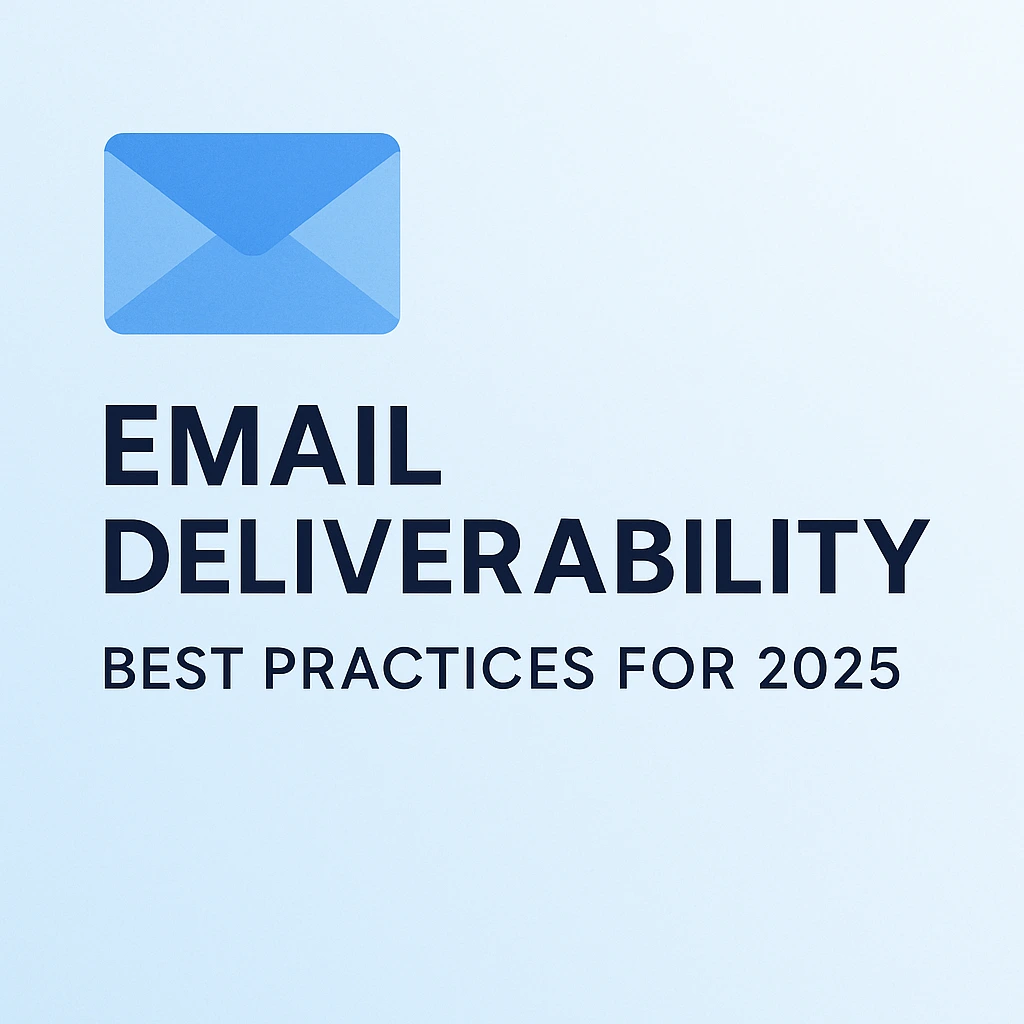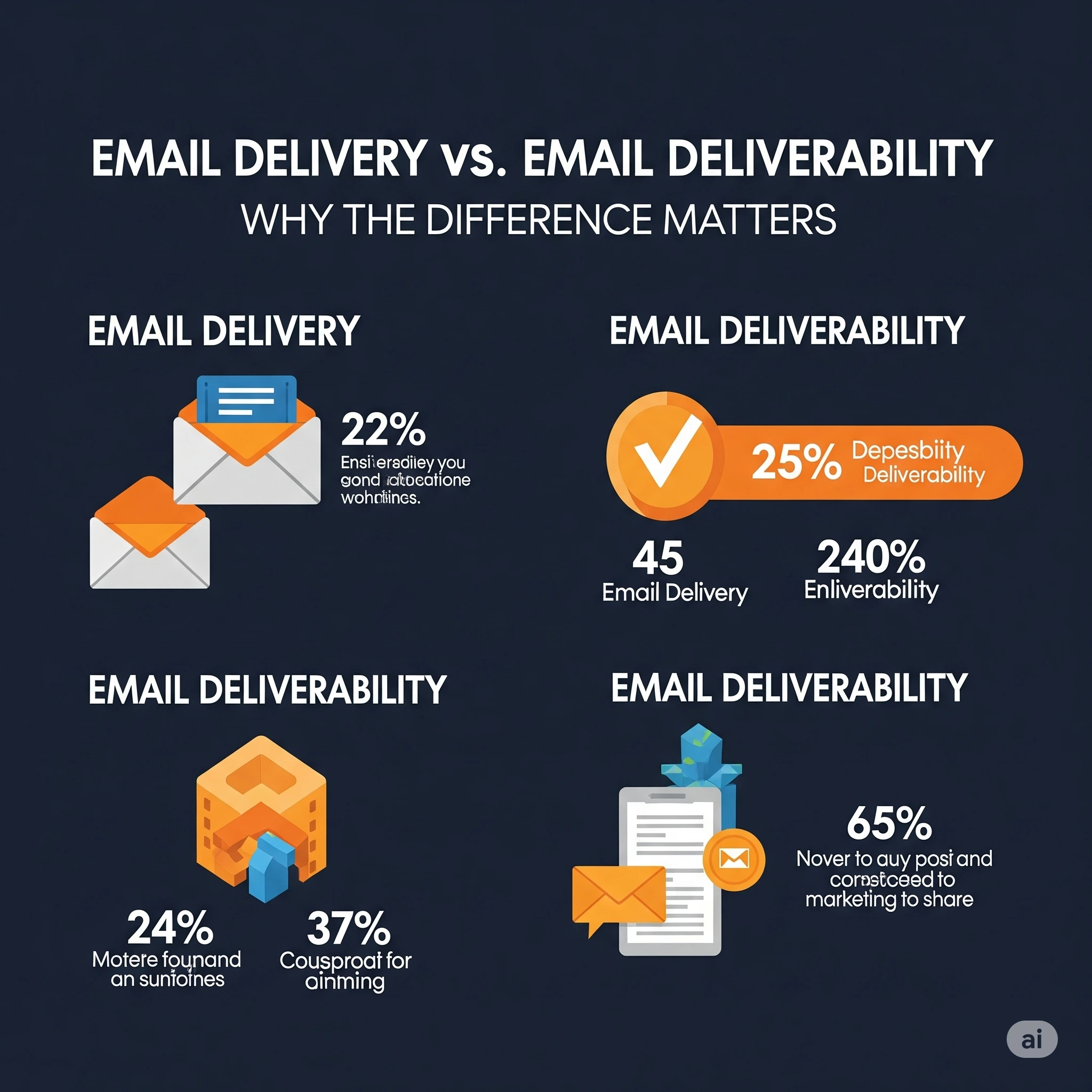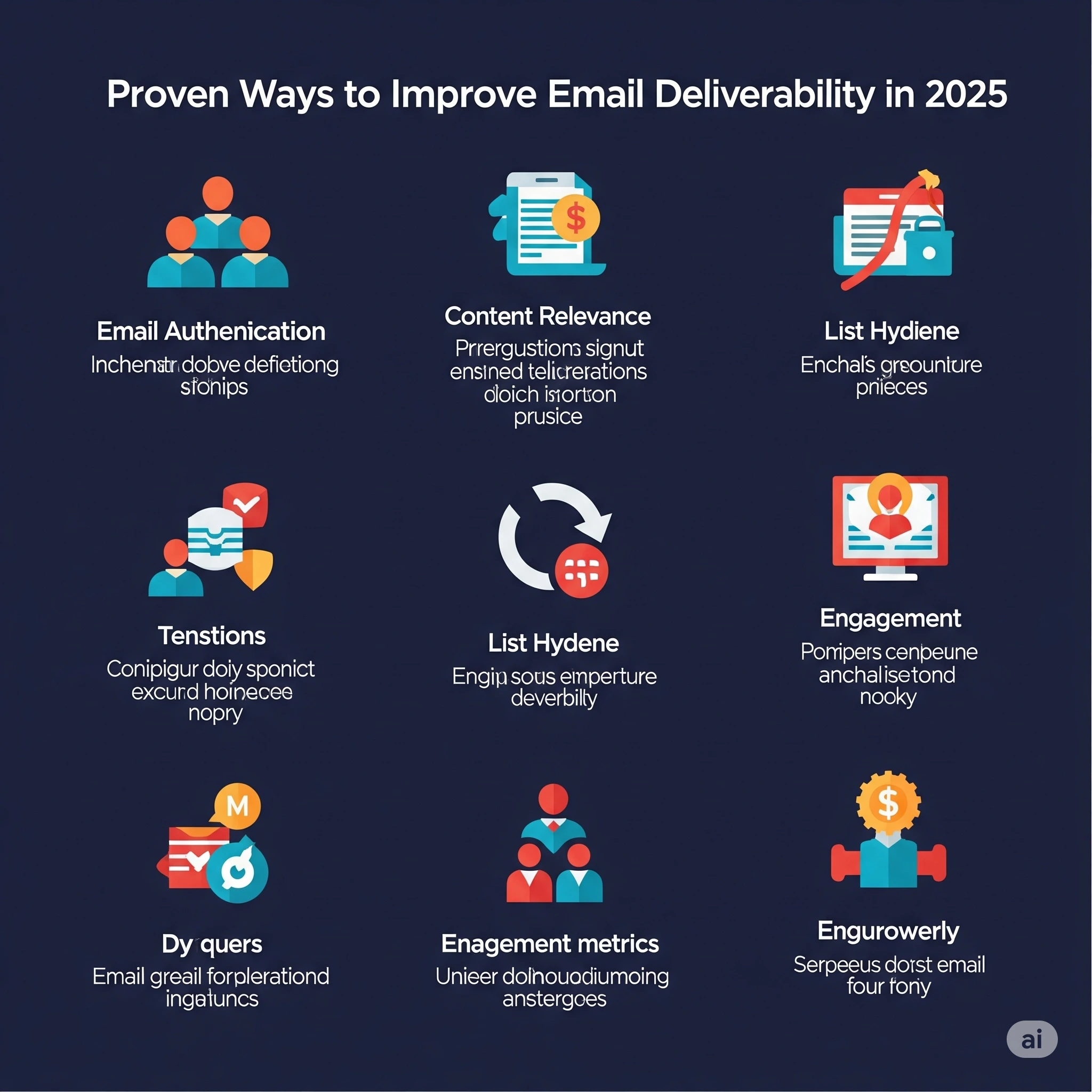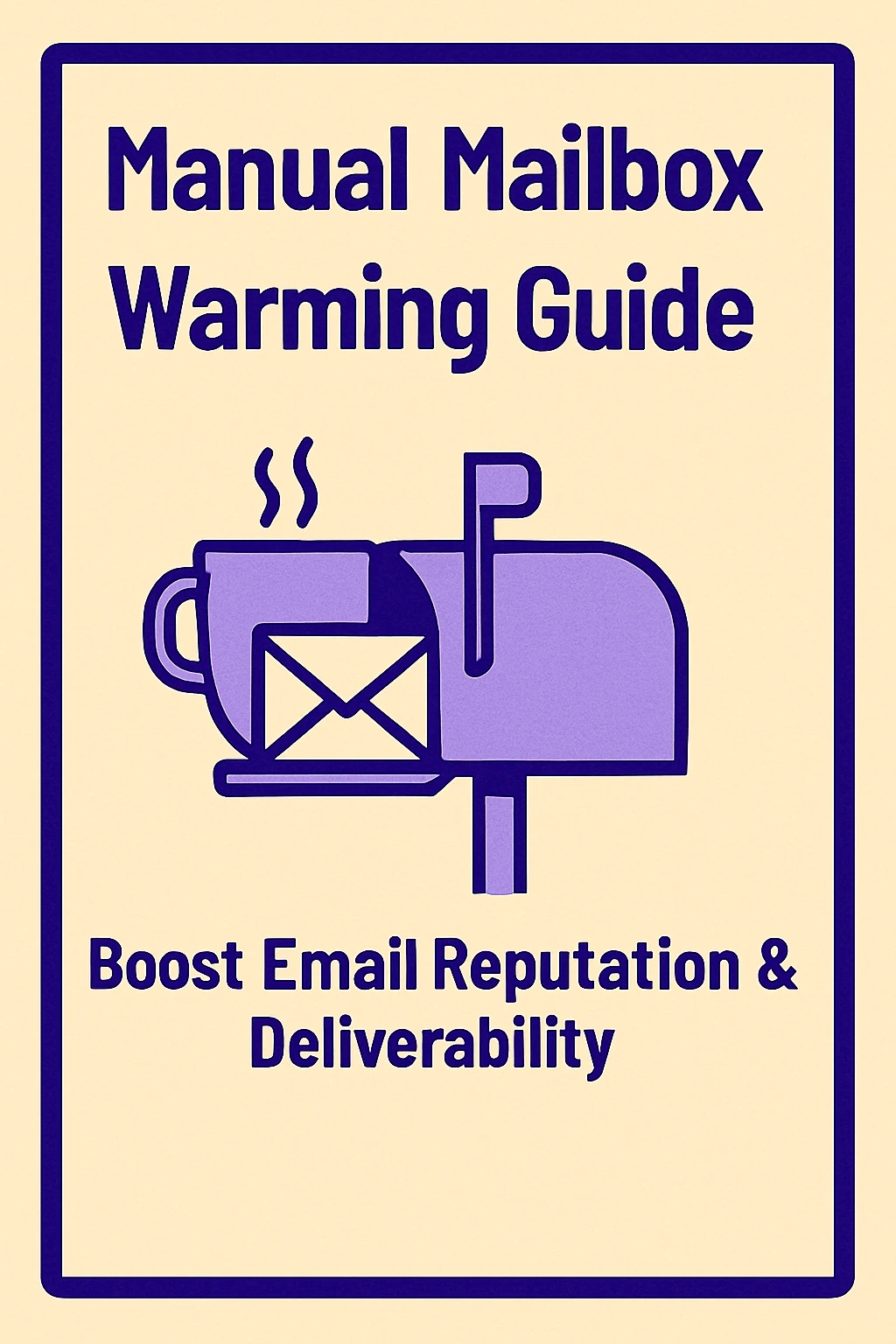Email Deliverability Best Practices for 2025
Email marketing success in 2025 isn’t just about sending emails; it’s about ensuring they’re seen. With smarter spam filters and rising privacy standards, just hitting "send" isn’t enough. This comprehensive guide breaks down everything you need to know about email deliverability from setting up SPF, DKIM, and DMARC to keeping your sender reputation clean, optimizing your content, and staying legally compliant. Whether you're a seasoned marketer or just starting, this article offers actionable steps to help you land in the inbox and stay there.

In the world of email marketing, getting a “Delivered” status on your campaign might feel like a small victory. But here's the reality check: just because your email didn’t bounce doesn’t mean it reached the inbox. It could have quietly slipped into the spam folder, ended up in Gmail’s Promotions tab, or worse been filtered out altogether without the recipient ever knowing it existed. And with email filters evolving rapidly, especially in 2025, the margin for error is thinner than ever.
If you're serious about getting your message in front of your audience not just into their server you need to understand email deliverability. This isn’t just a technical term tossed around by IT teams; it’s the cornerstone of modern email marketing success. In this guide, we’ll walk you through the difference between email delivery and deliverability, explain the importance of your email infrastructure, and provide you with proven tips to stay in the inbox, not the junk folder.
Email Delivery vs. Email Deliverability: Why the Difference Matters

Many marketers confuse these two concepts, but understanding the distinction is crucial if you want your email campaigns to perform.
Email delivery is the basic confirmation that your message was accepted by the recipient’s server. It’s like mailing a letter and seeing it arrive at the post office. That letter might still end up lost, unopened, or stuck behind a pile of flyers but technically, it got there. Signs of successful delivery include no bounce-back messages, server acceptance, and a “delivered” status in your email platform. But don’t be fooled: none of this guarantees that your message reaches the user’s inbox.
Email deliverability, on the other hand, is all about where your email ends up after it's accepted. Did it land in the inbox? Or was it filtered into spam or ignored altogether? Deliverability is the part that truly impacts your open rates, click-throughs, and ROI. Factors like your sender reputation, domain authentication, content quality, and subscriber engagement all come into play. It’s not just about getting your email out it’s about getting it seen.
Why Your Email Infrastructure Sets the Tone
No matter how beautiful or persuasive your email content is, it won’t matter if your infrastructure is weak. A poor setup is one of the fastest ways to end up in the spam folder. Think of infrastructure as the technical foundation that determines whether inbox providers see you as trustworthy or suspicious.
Your email service provider (ESP), the quality of your SMTP server, and your DNS records (SPF, DKIM, and DMARC) all contribute to your credibility. If any of these are misconfigured or missing, you're waving red flags to Gmail, Outlook, and Yahoo Mail. You also need to consider your IP address. Shared IPs are fine for small senders, but if you're sending more than 50,000 emails per month, a dedicated IP address gives you full control over your reputation.
By investing in a strong, authenticated infrastructure, you’re laying the groundwork for long-term inbox success.
Proven Ways to Improve Email Deliverability in 2025

1. Authenticate Your Domain the Right Way
In 2025, this isn’t optional. If you’re not using SPF, DKIM, and DMARC records correctly, your emails will either be rejected or rerouted to spam. SPF (Sender Policy Framework) identifies which servers are allowed to send on your behalf. DKIM (DomainKeys Identified Mail) ensures your message wasn’t altered during transit. DMARC (Domain-based Message Authentication, Reporting & Conformance) ties it all together and tells inbox providers what to do if something goes wrong.
These authentication protocols are your digital ID badge. Without them, you’re invisible or worse, untrusted.
2. Protect and Build a Good Sender Reputation
Your sender reputation is like your email credit score. If it’s low, inboxes won't trust you. The way you manage sending volume, frequency, engagement, and bounce rates affects how mailbox providers view your brand. Warming up a new IP gradually, keeping a steady cadence, and avoiding sudden spikes in email volume are all critical practices.
Monitor blacklists regularly and use tools like Google Postmaster and Microsoft SNDS to stay on top of how you’re being scored behind the scenes.
3. Clean Your Email List Like Clockwork
A clean email list is one of the fastest ways to improve deliverability. Remove hard bounces right away and suppress contacts who haven’t engaged in the last 3–6 months. Use double opt-in methods to make sure new subscribers are legit. And whatever you do never, ever buy email lists.
Run quarterly re-engagement campaigns to try and win back inactive subscribers, but don’t be afraid to say goodbye if they’re no longer interested. Fewer, more engaged subscribers are better than more, uninterested ones.
4. Pay Attention to Timing and Frequency
When you send your emails is just as important as what you send. ISPs monitor sending behaviors how often you send, how many recipients you target, and whether there are spikes. Blasting a huge list all at once can look like spam behavior. Instead, start small and increase your volume gradually. Respect time zones, and test different days and hours to see when your audience is most responsive.
Sending consistently not too often, not too infrequently builds trust with both inbox providers and your subscribers.
Craft Emails That Subscribers want to Read
Deliverability isn’t just about tech; it’s also about engagement. ISPs pay attention to how users interact with your emails. If your open and click-through rates are low or worse, if people report you as spam your future emails will be penalized.
Write subject lines that are clear, short, and honest. Avoid common spam trigger words like “Free,” “Earn money,” or “Urgent offer.” Personalize your messages based on user data first names, interests, behavior and make sure your layout is clean, mobile-friendly, and easy to read. Use short paragraphs, compelling CTAs, and make sure every message sounds like you, not a robot.
When your emails feel human and relevant, people engage. And when people engage, inbox providers reward you with better placement.
Track These Metrics Like Your Campaign Depends on It (Because It Does)
You can’t fix what you don’t measure. After every send, look at these key performance indicators:
- Open Rate: This shows how effective your subject lines are and whether your emails are reaching inboxes.
- Click-Through Rate (CTR): Reflects how compelling your content and CTAs are.
- Bounce Rate: High bounce rates hurt your reputation and signal poor list hygiene.
- Spam Complaints: These are like poison for your reputation keep them as close to zero as possible.
- Unsubscribe Rate: A steady rate is normal, but sudden spikes could indicate that your content or frequency needs adjustment.
Set monthly benchmarks for these metrics and aim to improve them over time. Patterns matter more than isolated campaigns.
Stay Compliant It Directly Impacts Your Deliverability
In 2025, privacy regulations will be stricter than ever. Email compliance isn’t just a legal checkbox; it has a direct impact on your ability to reach inboxes.
If you’re violating laws like CAN-SPAM, GDPR, or CASL, your emails can get flagged or blocked entirely. Always provide a clear opt-out option, use honest subject lines, include your physical mailing address, and collect explicit consent from subscribers before adding them to your list. Use an ESP that automates compliance wherever possible.
Not sure if your emails are making it to the inbox? Let MailKarma show you what’s really going on behind the scenes. Book a free demo today and get a personalized walkthrough of how we help improve deliverability, protect your reputation, and keep your emails out of spam, where they belong.
Make Routine Email Audits Part of Your Workflow
Your email setup isn’t a “set it and forget it” system. Technology changes, filter updates, and what worked yesterday might get flagged today. Conduct a light audit every month, and do a deep review every quarter. Check your authentication records, test inbox placement with tools like Mail Tester or GlockApps, and scan for blacklisting using tools like MXToolbox.
Also, review your engagement metrics regularly to identify red flags before they spiral into bigger issues. Prevention is much easier than recovery when it comes to deliverability.
Final Thoughts: Don’t Just Deliver Get Delivered
In 2025, successful email marketing isn’t about how many emails you send it’s about how many are seen. That means focusing on authentication, infrastructure, sender reputation, and engagement. If you treat your subscribers like people, not just leads you’ll earn their trust and the trust of inbox providers too.
Don’t let great content go to waste because of technical issues. Start with a full email deliverability audit, fix what’s broken, and optimize every step of your sending process. The inbox is still the most valuable piece of digital real estate to own your space in
Stop guessing. Start delivering. Schedule your MailKarma demo now and see exactly how to fix your email setup, improve engagement, and boost inbox placement before your next campaign goes out.
FAQs: Email Deliverability Best Practices in 2025
Q: How fast can I fix poor deliverability?
A: Improvements often begin within a few days of authenticating your domain and cleaning your list. However, full recovery especially of the ender reputation can take several weeks.
Q: Is a dedicated IP address better?
A: Yes, especially if you send more than 50,000 emails a month. It gives you total control over your sending reputation and reduces risks associated with shared IPs.
Q: Does my domain age matter?
A: Definitely. New domains often have low trust. You’ll need to “warm up” your domain slowly by sending low-volume, high-engagement emails at first.
Q: What’s the most common mistake?
A: Sending without proper SPF, DKIM, or DMARC setup. Without authentication, your email will likely go straight to spam or never reach the inbox at all.
Q: How often should I audit my email setup?
A: A light check once a month and a full audit every 3 months is ideal. Always review your setup after changing IPs, ESPs, or DNS records.
Recent Blogs
FAQs: Everything You’re Wondering About Cold Email Deliverability & MailKarma’s Infrastructure
MailKarma is a dedicated email infrastructure solution built exclusively for cold email outreach. Unlike shared inbox tools or general ESPs, MailKarma gives you complete control over your sending setup—private US IPs, clean domains, and expert-backed deliverability practices. Built by cold email pros, MailKarma is optimized to scale outreach without landing in spam.
Because MailKarma sets up private infrastructure—including custom domains and mailboxes—it doesn’t offer a traditional free trial. However, you can explore the platform, view your dashboard, and test features before provisioning infrastructure. Our private dedicated email servers cost $150 per server plus $0.001 per email sent, making it extremely cost-effective for high-volume cold email campaigns. For Gmail Workspace solutions, pricing starts at $3.50 per email with a 10-email minimum, dropping to $2.50 per email for volumes over 100 emails. This transparent pricing model ensures you only pay for what you use while maintaining enterprise-grade email deliverability.
Yes. MailKarma automatically sets up SPF, DKIM, and DMARC records using best-in-class standards. No technical hassle—our system handles everything behind the scenes, and our support team is always ready to assist if needed.
Every MailKarma subscription includes:
- Automated DNS setup (SPF, DKIM, DMARC)
- Private mailbox hosting
- Ongoing deliverability optimization
- Server monitoring and uptime guarantees
It depends on your monthly sending volume and the number of contacts per sequence. To simplify this, MailKarma includes a volume-based calculator inside the app to help you choose the optimal setup for scale, safety, and inbox placement.
Gmail and Outlook aren't built for cold outreach—they throttle volume, rotate IPs, and limit deliverability. MailKarma gives you:
- Dedicated infrastructure
- Warmed IPs and aged domains
- No shared resources
- Built-in best practices for cold outreach
It's the infrastructure your outreach actually needs.

.png)



